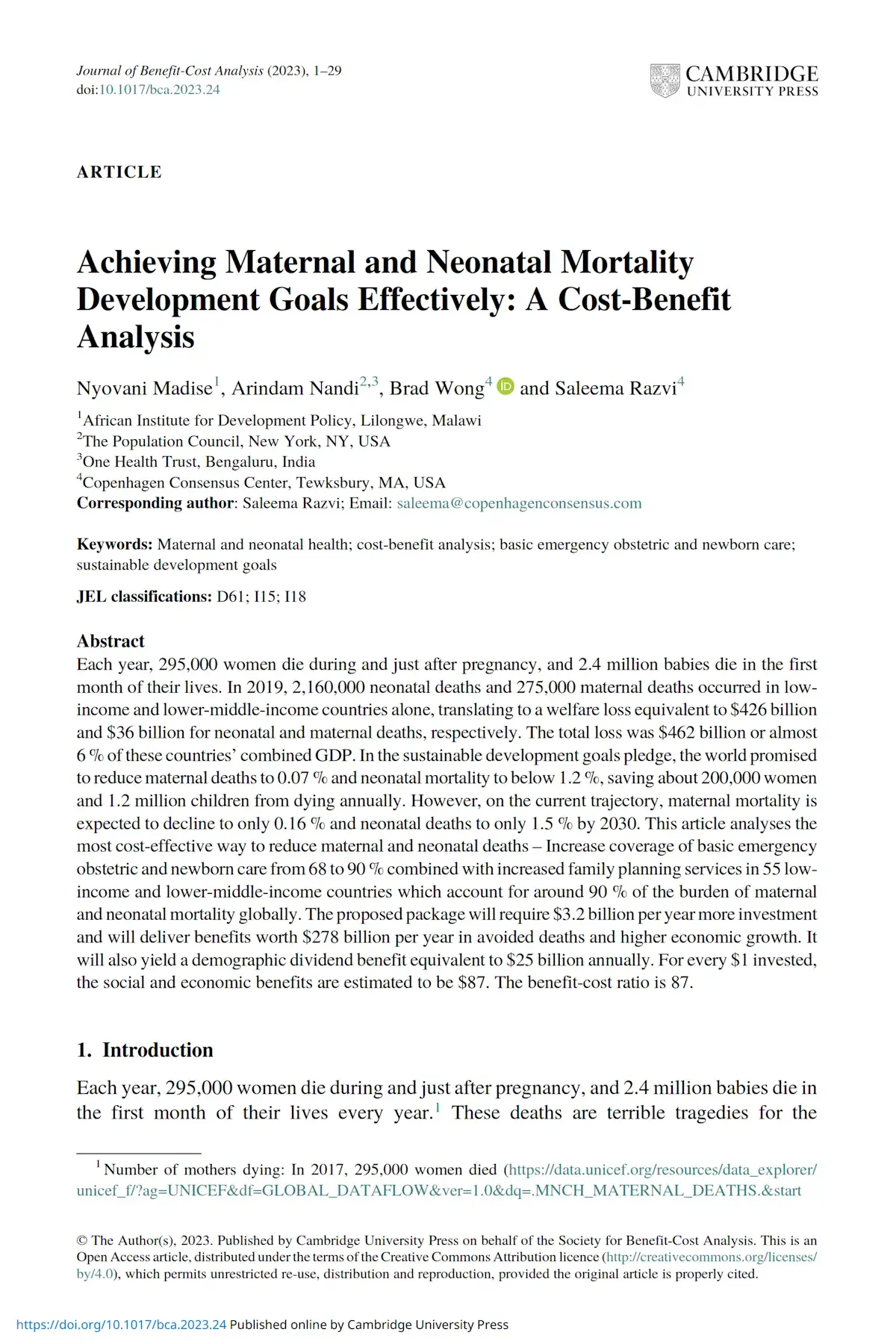Halftime for SDGs: Maternal and Newborn Health
Best Investment Paper
Each year, 295,000 women die during and just after pregnancy, and 2.4 million babies die in the first month of their lives. In 2019, 2,160,000 neonatal deaths and 275,000 maternal deaths occurred in low- income and lower-middle income countries alone, translating to a welfare loss equivalent to $426 billion and $36 billion for neonatal and maternal deaths respectively. The total loss was $462 billion or almost 6% of these countries’ combined GDP.
In the Sustainable Development Goals (SDGs) pledge, the world promised to reduce maternal deaths to 0.07% and neonatal mortality to below 1.2%, saving about 200,000 women and 1.2 million children from dying annually. However, on the current trajectory, maternal mortality is expected to decline to only 0.16% and neonatal deaths to only 1.5% by 2030.
This paper analyses the most cost-effective way to reduce maternal and neonatal deaths - Increase coverage of Basic Emergency Obstetric and Newborn Care (BEmONC) from 68% to 90% combined with increased family planning services in 55 low-income and lower-middle income countries which account for around 90% of the burden of maternal and neonatal mortality globally.
The proposed package will require $3.2 billion per year more investment and will deliver benefits worth $278 billion per year in avoided deaths and higher economic growth. It will also yield a demographic dividend benefit equivalent to $25bn annually. For every $1 invested, the social and economic benefits are estimated to be $87. The benefit-cost ratio (BCR) is 87.
The final peer-reviewed published article can be found here:


